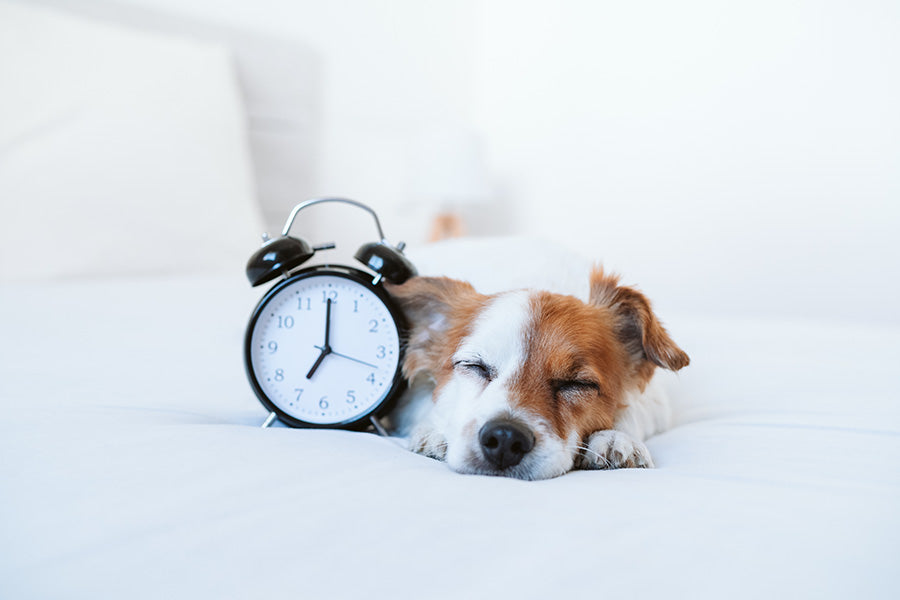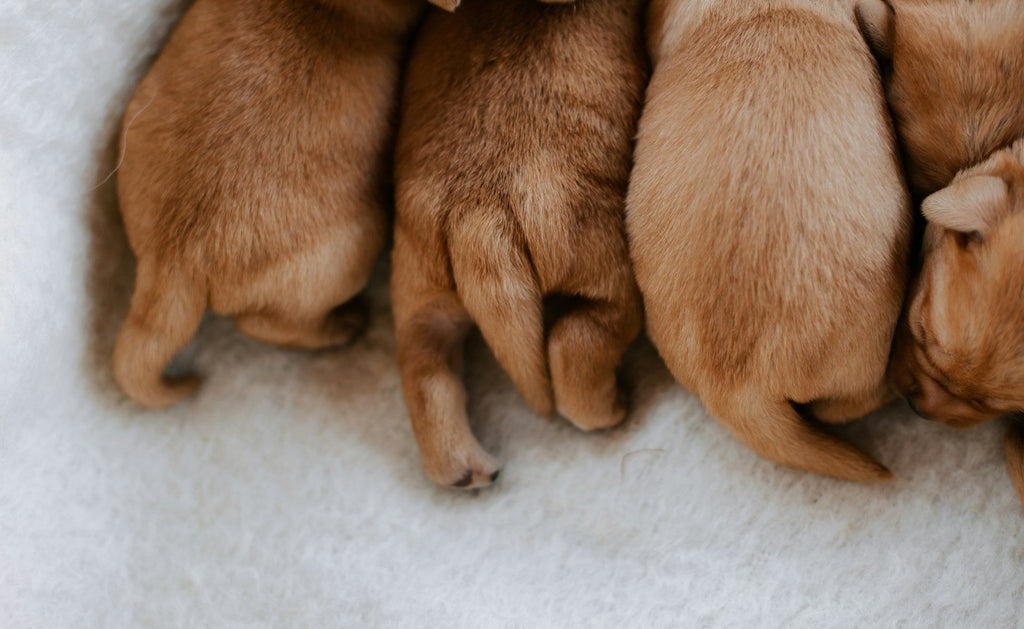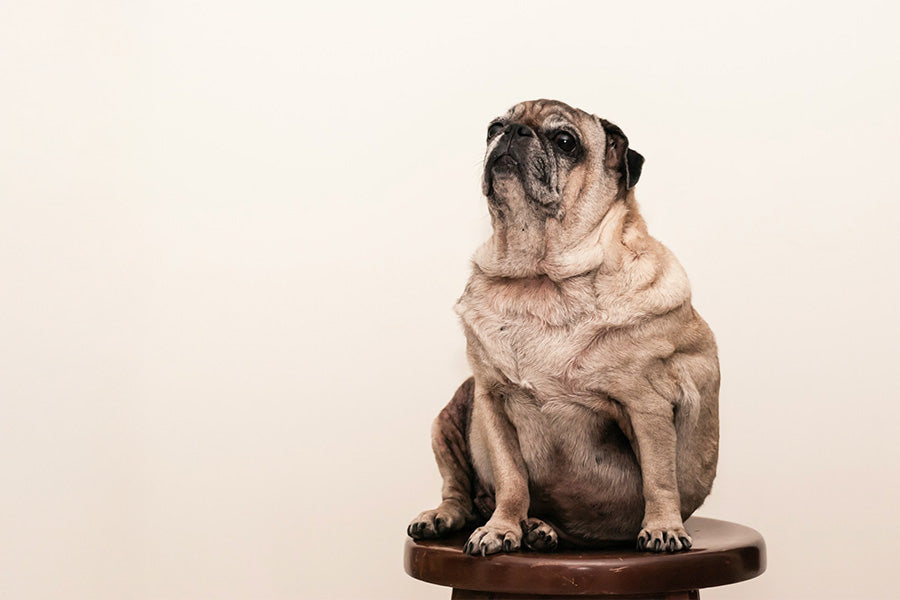Creating a Routine for House Training

House training your furry friend can feel like a daunting task, but with the right routine and a touch of patience, it's entirely achievable.
A well-structured routine not only helps in establishing good habits but also enhances the bond between you and your pet.
Whether you're working with a puppy or figuring out how to house train an adult dog, establishing a consistent routine is key. A routine provides the structure your dog needs to learn when and where it's appropriate to go potty, paving the way for a harmonious home environment.
Let's explore some potty training methods that can help you and your pet succeed. By incorporating a variety of techniques tailored to your dog's unique needs, you can make the training process efficient and enjoyable for both you and your pet. Remember, the goal is to teach your dog while fostering a loving relationship built on trust and understanding.

Understanding the Basics of Dog Potty Training
Before diving into specific techniques, it's important to understand the principles of dog potty training. Dogs are creatures of habit. They thrive on consistency and clear expectations.
By establishing a routine, you help your dog learn what's expected and when, which in turn makes the training process smoother and more effective. The foundation of successful potty training is understanding your dog's natural instincts and behaviours, allowing you to guide them effectively.
Why Routine Matters
Creating a routine provides your dog with predictability. It helps them understand when it's time to eat, play, sleep, and, most importantly, go potty. This routine reduces anxiety and confusion for your pet and sets clear boundaries and expectations. Predictability can significantly reduce the stress associated with learning new behaviours and adapting to a new environment, especially for puppies who are still exploring the world.
Furthermore, a routine helps in tracking your dog's progress and identifying any areas where they may need additional support. Regular feeding times, for instance, can aid in predicting when your dog will need to relieve themselves, making it easier to prevent accidents. Consistency in your routine also reinforces your role as a leader, helping your dog feel secure and confident in their daily activities.
Potty Training Methods: Finding What Works for You
There are various potty training methods to explore, each with its own approach. Tailoring a method to fit your dog's personality and your lifestyle can make all the difference. Here are a few popular ones that have proven effective for many dog owners:
1. Crate Training
Crate training is one of the most effective potty training methods. Dogs naturally avoid soiling their sleeping area, so a properly sized crate can encourage them to hold their bladder until they're let outside. Here's how to get started:
-
Choose the Right Crate: Make sure the crate is just big enough for your dog to stand, turn around, and lie down comfortably. Too much space can lead to accidents. Consider investing in a crate with adjustable dividers that can grow with your puppy, providing a cost-effective solution as they mature.
-
Create Positive Associations: Introduce the crate with treats and toys, making it a pleasant environment. Never use it as a form of punishment. Encourage your dog to enter the crate by placing a favorite toy or a treat inside, and always praise them for going in. Over time, your dog will associate the crate with safety and comfort.
-
Establish a Schedule: Take your dog out to potty first thing in the morning, after meals, after naps, and before bedtime. Gradually increase the time between potty breaks as they learn to hold it longer. By adhering to a consistent schedule, you help your dog develop bladder control and understand when it's appropriate to go outside.

2. Scheduled Outdoor Breaks
Consistency is key with scheduled outdoor breaks. Take your dog to the same spot outside every time to encourage them to associate that area with going potty. This method is particularly useful for reinforcing outdoor potty habits and ensuring your dog knows where it's appropriate to relieve themselves.
-
Set Regular Times: Take your dog out at the same times each day. After waking up, after meals, and before bed are crucial times. Consistent timing helps your dog anticipate potty breaks, reducing the likelihood of accidents indoors.
-
Use a Cue Word: Choose a simple word or phrase (like "go potty") to repeat when your dog is about to relieve themselves. This helps them associate the word with the action. Over time, your dog will learn to respond to the cue, making it easier to encourage them to go potty on command.
3. Positive Reinforcement
Positive reinforcement is a powerful tool in dog potty training. Reward your dog immediately after they go potty outside to reinforce the behavior. This method not only teaches your dog what is expected but also strengthens the bond between you.
-
Use Treats and Praise: As soon as your dog finishes, offer a treat and plenty of praise. Make it a joyful moment. Consistent positive reinforcement helps your dog associate going potty outside with a rewarding experience, increasing the likelihood of them repeating the behavior.
-
Be Consistent: Always reward good behavior. Consistency helps your dog connect the reward with the action. Remember, the timing of the reward is crucial; it should happen immediately after the desired behavior to create a strong association.
How to House Train an Adult Dog
House training an adult dog might seem challenging, but it's definitely possible with patience and persistence. Understanding that adult dogs may have ingrained habits or past experiences is crucial in tailoring your approach. Here are some tips to guide you through the process:
Understand Their Background
Adult dogs may have different experiences and backgrounds. Some might have been house trained before, while others may have never learned. Understanding this can help you tailor your approach. Take the time to observe your dog's behaviour and patterns to identify any triggers or preferences they may have.
Additionally, consider any potential past trauma or negative experiences that could impact their training. Being aware of these factors will enable you to create a supportive environment that addresses their specific needs. Patience and empathy are essential when working with adult dogs, as they may require more time to adjust to new routines.
Establish a Routine
Just like with puppies, adult dogs benefit from a consistent routine. Set regular feeding and potty break times to help them adjust. A structured routine provides your dog with a sense of security and predictability, which is essential for successful training.
Address Any Anxiety
Adult dogs might have anxiety or fear that affects their potty training. Create a calm environment and be patient. If anxiety seems severe, consult a veterinarian or professional trainer for guidance. Providing a safe and comfortable space for your dog to retreat to can help alleviate anxiety and create a more conducive environment for learning.
Be Patient and Consistent
Progress might be slower with adult dogs, but patience and consistency will pay off. Celebrate small victories and continue with positive reinforcement. Each success, no matter how small, is a step towards achieving your ultimate goal of a house-trained dog.

Overcoming Common Challenges
Every dog is unique, and you might encounter challenges along the way. Being prepared to address these issues will help maintain a positive training experience. Here are some common issues and how to address them:
Accidents in the House
Accidents happen, especially during the early stages of training. Clean accidents thoroughly to remove any scent that might attract your dog back to the same spot. Avoid scolding, as it can create fear or confusion. Instead, focus on reinforcing positive behaviors and redirecting your dog to the appropriate potty area.
Reluctance to Go Outside
Some dogs might be hesitant to go outside due to weather, noise, or other factors. Create a positive outdoor experience by bringing treats, toys, and using encouraging words. Gradually expose your dog to different outdoor environments to build their confidence and comfort.
Regression in Training
Occasionally, dogs may regress in their training. Stick to the routine and reinforce good behavior. If regression continues, consult with a trainer for additional strategies. Consistency and patience are key to overcoming setbacks, and with time, your dog will regain their progress.
Ethical and Innovative Pet Products
In addition to training techniques, consider the role of innovative pet products in enhancing your dog's potty training experience. Look for products that are ethically produced and designed with your pet's well-being in mind. Investing in quality products can make a significant difference in the training process.
-
Eco-Friendly Cleaning Products: Choose pet-safe cleaning products to manage accidents without harming your pet or the environment. These products are not only effective but also align with a sustainable lifestyle.
-
Comfortable Crates and Accessories: Invest in a high-quality crate and cozy bedding to make your dog's space inviting. A comfortable environment encourages your dog to see their crate as a safe haven.
-
Interactive Toys and Treats: Use toys and treats to reward good behaviour and keep your dog engaged. Interactive toys can provide mental stimulation, helping to reduce boredom and prevent unwanted behaviours.
Final Thoughts: Embrace the Journey
Training your dog is more than just teaching them where to go potty—it's about building a strong bond and understanding their needs. Every dog is unique, and what works for one might not work for another. Embrace the journey with an open mind and a willingness to adapt your approach as needed.

Experiment with different potty training methods and products to find the right fit for your furry companion. By being patient, consistent, and compassionate, you'll not only succeed in house training your dog but also foster a loving and trusting relationship that will last a lifetime. Remember, you're not just training your pet; you're investing in their happiness and well-being. Good luck on this rewarding journey!



